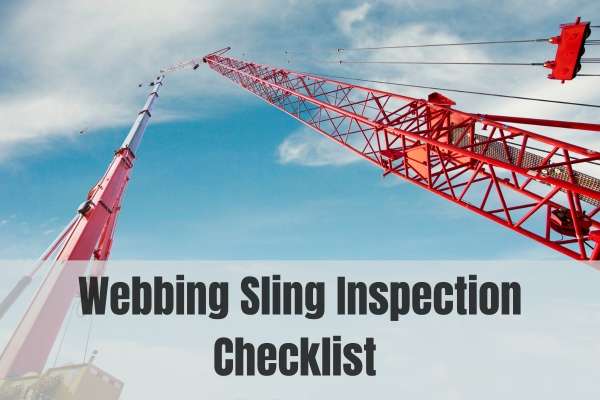100 %

Aug 18,2023
In industries that rely heavily on lifting and rigging operations, ensuring the safety and efficiency of equipment is paramount. Webbing or lifting slings play a vital role in these operations by providing a flexible and durable means to lift and move heavy loads. However, like any equipment, webbing slings can degrade over time due to wear and tear, environmental factors, and improper usage. Regularly inspecting webbing slings is essential to maintain a safe working environment and prevent potential accidents. In this article, we present an all-encompassing webbing sling inspection checklist to help you ensure the longevity and reliability of your lifting equipment.
The first step in the webbing sling inspection process is a thorough visual examination. This can be conducted before and after each use. Check for the following:
Tears and Cuts: Inspect the entire length of the sling for any signs of tears, cuts, or abrasions. Even minor damage can compromise the sling's integrity, leading to catastrophic failures during lifting.
Frayed Edges: Pay close attention to the edges of the webbing sling. If you notice frayed or unraveling fibers, the sling should be taken out of service immediately.
Stitching: Examine the stitching that holds the webbing together. Ensure there are no loose threads or broken stitches, which can weaken the sling's strength.
Chemical Damage: If the sling has been exposed to chemicals, inspect for any signs of deterioration. Chemical exposure can weaken the fibers, making the sling unsafe for use.
Each webbing sling should have a legible label that provides crucial information about its capacity, manufacturer and intended use. During your inspection, verify the following:
Legibility: Ensure that the label is still readable. Faded or damaged labels can make determining the sling's specifications difficult.
Accuracy: Cross-reference the information on the label with the sling's actual condition. Make sure the capacity, length, and other details match your requirements.
Webbing slings often come with hardware and attachments such as hooks, shackles, and rings. These components are equally important to inspect:
Hook Condition: Check hooks for signs of bending, cracking, or deformities. Hooks in poor condition can lead to sling slippage or detachment during lifting.
Latch Functionality: If the sling has a latch or clasp, ensure it operates smoothly and securely. A malfunctioning latch can cause accidental release of the load.
Improper use, like tying knots or twisting the sling during lifting, can cause stress concentrations and weaken the webbing. Keep an eye out for:
Knots: Untangle any knots present in the webbing. Knots can reduce the sling's strength and create stress points compromising its safety.
Twists: Webbing slings should lie flat without twists during use. Twisted slings can cause uneven distribution of load forces and reduce lifting capacity.
Webbing slings used outdoors are exposed to various environmental factors, including UV radiation, moisture, and temperature fluctuations. Evaluate the following:
UV Damage: UV rays can degrade the webbing material over time. Look for signs of discoloration, brittleness, or fading, which indicate potential UV damage.
Moisture and Contaminants: Inspect for mold, mildew, or other contaminants that could weaken the sling's fibers. Damp or dirty slings should be cleaned and thoroughly dried before use.
Maintaining a comprehensive record of inspections and maintenance is essential for regulatory compliance and tracking the lifespan of your webbing slings. Create a system to document:
Inspection Dates: Keep a log of when each inspection was conducted.
Findings: Record any issues or concerns identified during inspections.
Actions Taken: Document the actions, whether cleaning, repairing, or replacing the sling.
A proactive approach to webbing sling inspection is critical to ensuring the safety and efficiency of lifting operations. By regularly conducting visual assessments, checking labels and identification, inspecting hardware, addressing knots and twists, evaluating UV and environmental damage, and maintaining proper documentation, you can extend the lifespan of your webbing slings and minimize the risk of accidents. Remember, a well-maintained webbing sling is not just a piece of equipment; it's a vital link in the chain of safety that underpins your lifting operations.